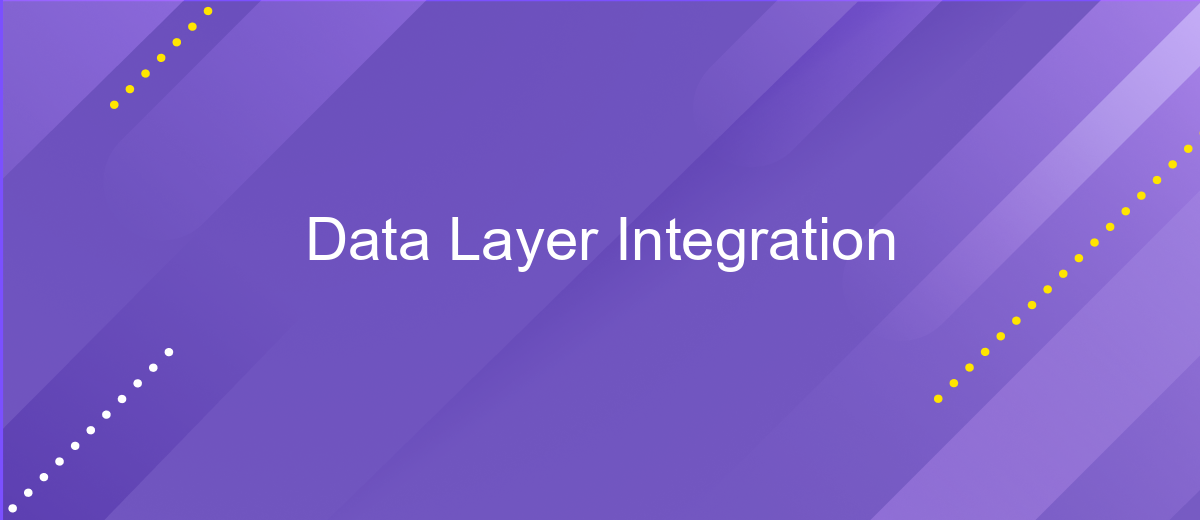Data Layer Integration
Data Layer Integration is a crucial component in modern web development, enabling seamless communication between various data sources and user interfaces. By establishing a unified data layer, businesses can streamline data management, enhance user experience, and drive more informed decision-making. This article explores the key concepts, benefits, and best practices of implementing data layer integration in your digital ecosystem.
Introduction
Data Layer Integration is a critical component in modern data management and analytics. It involves combining data from different sources, ensuring that it is accessible, consistent, and usable for various applications. This integration is essential for businesses to make informed decisions, improve operational efficiency, and gain competitive advantages.
- Ensures data consistency across multiple platforms
- Facilitates real-time data access and analysis
- Enhances data quality and accuracy
- Supports compliance with data governance policies
- Enables seamless data flow between systems
By leveraging Data Layer Integration, organizations can break down data silos, streamline workflows, and foster a data-driven culture. This process not only improves the reliability of data but also empowers stakeholders with timely insights, driving better business outcomes. As data continues to grow in volume and complexity, effective integration strategies will remain pivotal in harnessing its full potential.
Understanding the Data Layer

The data layer serves as a crucial intermediary between your website and various analytics and marketing tools. It acts as a repository for all the data that these tools need to function effectively, capturing user interactions and other relevant information. By structuring this data in a consistent manner, the data layer ensures that different platforms can access and interpret it correctly, leading to more accurate insights and better decision-making.
Setting up a robust data layer can be simplified with the use of integration services like ApiX-Drive. ApiX-Drive facilitates the seamless connection between your data layer and multiple third-party applications, automating data transfers and reducing manual effort. This service not only saves time but also minimizes the risk of errors, ensuring that your data is always up-to-date and reliable. With ApiX-Drive, you can easily manage and optimize your data layer integrations, allowing you to focus on leveraging data for strategic growth.
Steps for Data Layer Integration

Integrating a data layer is a crucial step in enhancing your website's data management capabilities. It involves several key steps to ensure seamless data flow and accurate tracking.
- Define Objectives: Clearly outline the goals you aim to achieve with the data layer integration, such as improved analytics or better user experience.
- Identify Data Points: Determine which data points are essential for your objectives, including user interactions, page views, and e-commerce transactions.
- Create Data Layer Structure: Develop a structured format for your data layer, ensuring it is consistent and follows best practices for naming conventions and data types.
- Implement the Data Layer: Integrate the data layer into your website's codebase, typically using JavaScript, and ensure it captures the identified data points accurately.
- Test and Validate: Rigorously test the data layer implementation to verify that all data points are being captured correctly and that the data is being transmitted to your analytics tools.
- Monitor and Optimize: Continuously monitor the data layer's performance and make necessary adjustments to improve data accuracy and relevance over time.
By following these steps, you can ensure a robust and effective data layer integration that enhances your website's data-driven decision-making capabilities.
Benefits and Challenges of Data Layer Integration

Data Layer Integration offers numerous benefits for businesses aiming to streamline their operations and enhance data accuracy. By consolidating data from various sources into a unified layer, organizations can achieve a more comprehensive view of their operations, leading to better decision-making and improved efficiency.
However, integrating data layers also presents several challenges that must be addressed to ensure successful implementation. These challenges often involve technical complexities, data quality issues, and the need for ongoing maintenance and updates.
- Improved data accuracy and consistency
- Enhanced decision-making capabilities
- Streamlined operations and processes
- Better customer insights and personalization
Despite the challenges, the benefits of Data Layer Integration can significantly outweigh the drawbacks if approached strategically. Organizations must invest in the right tools and expertise to navigate the complexities, ensuring that the integrated data layer becomes a valuable asset for driving business growth and efficiency.


Conclusion
In conclusion, Data Layer Integration is a critical component for modern businesses seeking to streamline their operations and enhance data accuracy. By integrating various data sources into a unified layer, organizations can achieve better data consistency, improve decision-making processes, and optimize overall performance. The implementation of such integrations requires careful planning and the right set of tools to ensure seamless data flow and minimal disruptions.
Services like ApiX-Drive play a pivotal role in simplifying the integration process. ApiX-Drive offers a user-friendly platform that allows businesses to connect multiple applications without extensive coding knowledge. This not only accelerates the integration timeline but also reduces the risk of errors, making it an invaluable resource for businesses of all sizes. Embracing tools like ApiX-Drive can significantly enhance the efficiency and reliability of data layer integrations, ultimately driving business growth and innovation.
FAQ
What is Data Layer Integration?
Why is Data Layer Integration important for businesses?
How can I implement Data Layer Integration in my organization?
What challenges might I face during Data Layer Integration?
Can Data Layer Integration improve data security?
Strive to take your business to the next level, achieve your goals faster and more efficiently? Apix-Drive is your reliable assistant for these tasks. An online service and application connector will help you automate key business processes and get rid of the routine. You and your employees will free up time for important core tasks. Try Apix-Drive features for free to see the effectiveness of the online connector for yourself.

